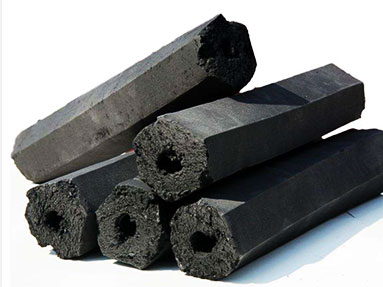Charcoal briquettes have been a staple fuel source for centuries, prized for their long-lasting heat and versatility in cooking and heating applications. However, traditional charcoal production methods often come at a significant environmental cost, contributing to deforestation, air pollution, and carbon emissions. In response to these challenges, innovative approaches to charcoal production, such as charcoal briquette making, have emerged as sustainable alternatives. In this blog post, we will explore the art and science of charcoal briquette making, highlighting its environmental benefits, production process, and diverse applications.
Environmental Benefits of Charcoal Briquette Making
Charcoal briquette making offers several environmental advantages over traditional charcoal production methods. One of the primary benefits is the utilization of renewable biomass as feedstock, such as agricultural residues, sawdust, or charcoal fines. By repurposing waste materials that would otherwise be discarded or burned inefficiently, charcoal briquette making helps reduce pressure on natural forests and promotes sustainable land management practices. More information on charcoal briquette making machine.

Furthermore, charcoal briquettes produce fewer emissions and less smoke compared to traditional charcoal, making them a cleaner and healthier fuel option. The controlled combustion of briquettes results in higher heat efficiency and lower levels of air pollutants, such as particulate matter and carbon monoxide. This not only improves indoor and outdoor air quality but also mitigates the adverse health effects associated with exposure to smoke from open fires or unventilated stoves.
The Production Process of Charcoal Briquette Making
The production of charcoal briquettes involves several key steps, each of which contributes to the quality and performance of the final product.
- Raw Material Preparation: The first step is to prepare the raw materials by shredding or pulverizing biomass feedstock into small particles. Common sources of biomass include sawdust, wood chips, agricultural residues, and charcoal fines. See straw charcoal machine here.
- Mixing and Binding: The shredded biomass is then mixed with a binding agent, such as starch, clay, or molasses, to improve the cohesion and structural integrity of the briquettes. The binding agent helps hold the particles together during compaction and ensures that the briquettes maintain their shape and consistency.
- Compaction and Molding: The mixed biomass and binding agent are compacted into the desired shape and size using a briquetting machine or press. This process applies pressure to the mixture, forcing it to adhere and form solid briquettes with uniform density and dimensions.
- Drying and Curing: The freshly formed briquettes are then dried to reduce moisture content and improve combustion efficiency. Depending on the production scale and equipment available, drying may be accomplished using natural sunlight, mechanical dryers, or kilns. Curing, or allowing the briquettes to rest and mature, may also enhance their performance by stabilizing their structure and improving burn characteristics.
- Packaging and Distribution: Once dried and cured, the charcoal briquettes are packaged for distribution and sale. Packaging options range from simple bags or sacks to branded packaging with labeling and instructions. Proper packaging ensures product quality and facilitates storage, transportation, and marketing. Find high quality rice husk charcoal making machine here.
Diverse Applications of Charcoal Briquettes
Charcoal briquettes find applications in a variety of settings, ranging from household cooking and heating to industrial processes and recreational activities. Some common uses include:
- Household Cooking: Charcoal briquettes are widely used for grilling, barbecuing, and outdoor cooking due to their consistent heat output and long burn time. They are also suitable for use in charcoal stoves and portable cookstoves, providing an affordable and accessible energy source for households in both urban and rural areas.
- Industrial and Commercial Heating: Charcoal briquettes serve as a cost-effective fuel for industrial boilers, furnaces, and kilns, providing reliable heat for manufacturing processes, drying operations, and space heating applications. Their uniform size and composition make them easy to handle and automate in large-scale operations.
- Environmental Remediation: In addition to their energy value, charcoal briquettes can be used for environmental remediation purposes, such as water and soil filtration, odor control, and waste management. Activated charcoal briquettes, produced from high-temperature carbonization and activation processes, exhibit enhanced adsorption properties and are utilized in diverse environmental applications.

Conclusion: Empowering Sustainability Through Charcoal Briquette Making
In conclusion, charcoal briquette making represents a sustainable and versatile approach to charcoal production, offering environmental, economic, and social benefits. By utilizing renewable biomass feedstock, minimizing emissions, and maximizing resource efficiency, charcoal briquette making helps mitigate deforestation, reduce air pollution, and alleviate pressure on natural ecosystems. Moreover, the diverse applications of charcoal briquettes contribute to energy security, livelihood development, and environmental stewardship in communities around the world. Get biomass pyrolysis plant to process biomass waste.
As the demand for cleaner and more sustainable energy solutions continues to grow, charcoal briquette making is poised to play a vital role in the transition to a low-carbon economy. Through innovation, collaboration, and investment in research and development, we can further optimize the production process, improve product performance, and expand market opportunities for charcoal briquettes. Together, we can harness the powe of charcoal briquette making to empower sustainability and create a brighter future for generations to come.